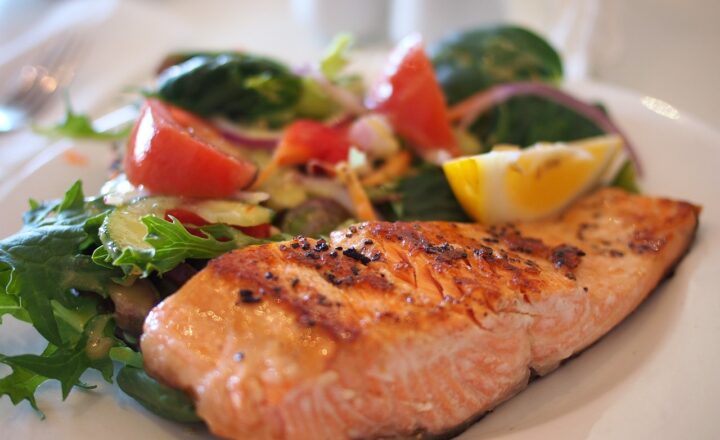A Culinary Tour of Global Cuisine: Explore Flavors from Around the World
November 19, 2024

Food is a universal language that unites people from various cultures through shared experiences and flavors. From the spicy curries of India to the elegant pastry of France, global cuisine offers a rich tapestry of tastes that reflects the history, geography, and traditions of different regions. In this article, we embark on a culinary tour around the world, exploring some of the most iconic dishes and the stories behind them, bringing the flavors of the globe to your kitchen.
1. Introduction to Global Cuisine
Global cuisine is not just about food; it’s a reflection of culture, tradition, and the history of the people who create and enjoy it. Different regions of the world have unique ingredients, cooking methods, and culinary philosophies that shape their culinary identity. Exploring global cuisine allows us to appreciate the diversity and richness of human experience.
Let’s take a journey through various continents and their signature dishes, delving into how geography, climate, and culture shape what we eat.
2. Asia: A Melting Pot of Flavors
Asia is home to some of the most vibrant and diverse food cultures in the world. Here are a few highlights:
2.1. India: The Spice Haven
India’s culinary journey takes you through a spectrum of flavors, driven by its extensive use of spices. Signature dishes like biryani, butter chicken, and dosa highlight regional differences— from the coconut-based curries of the south to the tandoori meats of the north. The complexity of Indian cuisine is a testament to the country’s cultural diversity.
2.2. Japan: The Art of Simplicity
Japanese cuisine captivates with its aesthetic presentation and balance of flavors. Dishes such as sushi, ramen, and tempura reflect the Japanese philosophy of using fresh, seasonal ingredients and minimal processing. Understanding the traditional tea ceremony also provides insight into Japan’s culinary practices.
2.3. Thailand: A Balance of Sweet, Sour, and Spicy
Thai cuisine is renowned for its vibrant flavors and aromatic herbs. Dishes like pad Thai, green curry, and tom Yum soup encapsulate the country’s culinary landscape, showcasing a harmonious blend of sweet, sour, salty, and spicy tastes, a representation of Thailand’s rich cultural heritage.
3. Europe: A Palette of Culinary Heritage
Europe offers a myriad of flavors, each country boasting its own culinary heritage:
3.1. Italy: The Passion for Food
Italian cuisine has gained worldwide popularity with dishes like pasta, pizza, and gelato. Italian food emphasizes quality ingredients and simplicity, inviting everyone to savor the joy of cooking together. Regional specialties, such as risotto from the north and seafood dishes from the south, highlight Italy’s diverse culinary landscape.
3.2. France: Culinary Artistry
French cuisine is often considered the cornerstone of gastronomy, with techniques that have influenced culinary arts globally. Dishes like coq au vin, bouillabaisse, and exquisite pastries showcase the culinary finesse and the importance of presentation. The French approach to food combines artistry with tradition, creating dining experiences that are both visual and flavorful.
3.3. Spain: A Celebration of Color and Flavor
Spanish cuisine is vibrant and rich, with iconic dishes like paella, tapas, and churros. The emphasis on sharing meals and enjoying local wine makes dining an integral part of Spanish culture. Each region offers distinct flavors, from the seafood of Galicia to the spicy dishes of Andalusia.
4. The Americas: A Fusion of Cultures
The Americas boast a rich tapestry of culinary traditions influenced by Indigenous cultures and immigrant populations:
4.1. Mexico: A Celebration of Tradition
Mexican cuisine is a delightful blend of ancient traditions and modern innovation. Dishes such as tacos, enchiladas, and mole showcase the use of bold flavors and a wide array of ingredients. The emphasis on fresh produce and spices highlights the country’s culinary heritage, deeply rooted in its cultural history.
4.2. Brazil: The Flavors of the Tropics
Brazilian cuisine reflects its rich cultural diversity, with dishes influenced by Portuguese, African, and Indigenous flavors. Feijoada, a black bean stew, and pão de queijo, cheese bread, are staples that illustrate the culinary identity of Brazil, bringing together flavors from various regions.
4.3. United States: A Melting Pot of Flavors
American cuisine is an eclectic mix of immigrant traditions, with BBQ, burgers, and soul food showcasing regional variations. The fusion of global influences has led to the emergence of unique culinary creations, making America a hub for food innovation.
5. Africa: A Culinary Mosaic
African cuisine is incredibly diverse, with each region offering distinct dishes and flavors:
5.1. Morocco: Aromatic Spices and Tagines
Moroccan cuisine is famed for its use of spices and slow-cooked tagines. Dishes like couscous and pastilla celebrate the richness of the country’s agricultural products and the historical influence of trade routes. The blend of sweet and savory flavors makes Moroccan food truly unique.
5.2. Ethiopia: Communal Dining and Bold Flavors
Ethiopian cuisine is known for its spicy stews and communal dining culture. Dishes like injera and doro wat showcase a variety of flavors and textures. The tradition of eating with hands fosters a sense of community and connection among diners.
6. Conclusion: Bringing Global Flavors to Your Kitchen
A culinary tour of global cuisine reveals the world’s rich heritage and diverse flavors. Understanding and appreciating these dishes can transform your cooking experience and widen your culinary horizons. By experimenting with ingredients and recipes from various cultures, you can bring a piece of the world into your own kitchen.
Ultimately, food is not only sustenance but also a pathway to understanding and connecting with different cultures. So gather your ingredients, embrace new flavors, and embark on your culinary adventure today!








